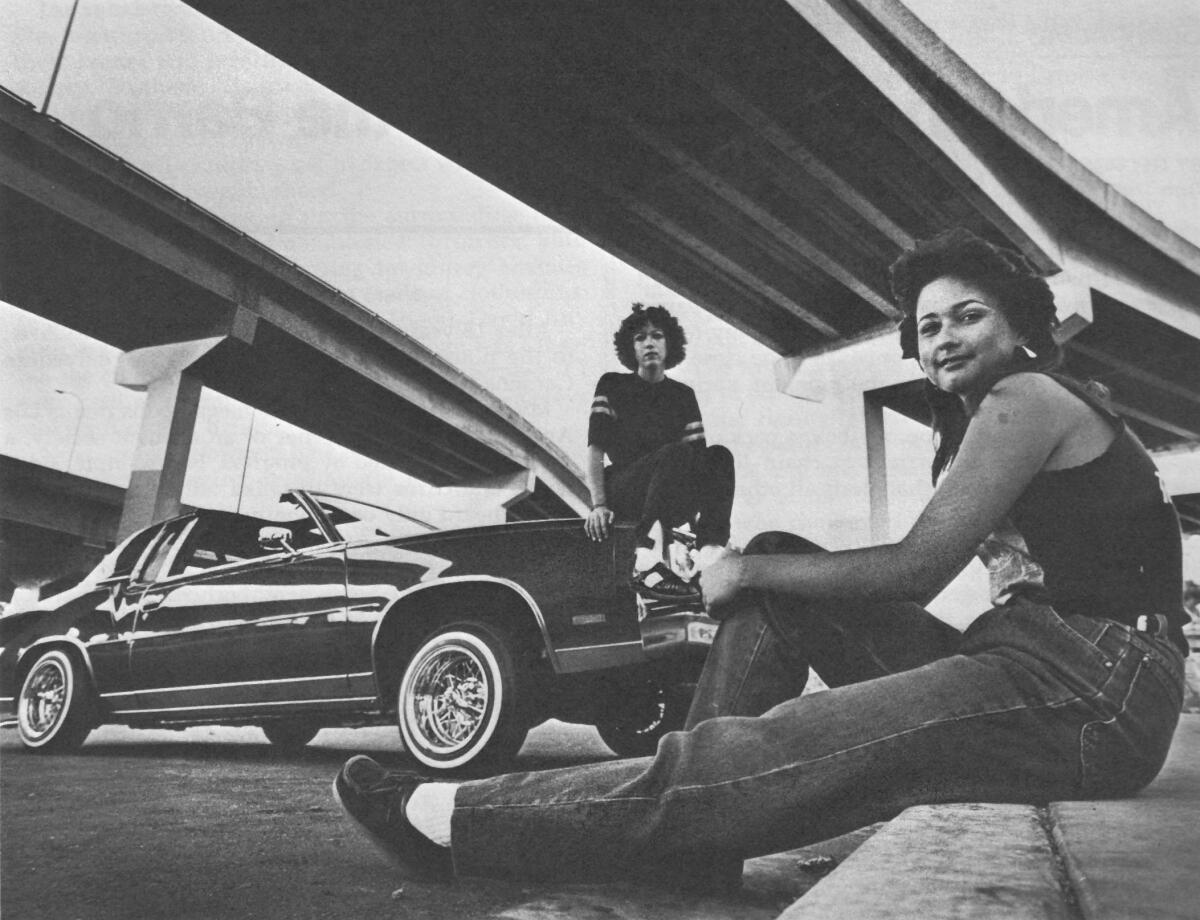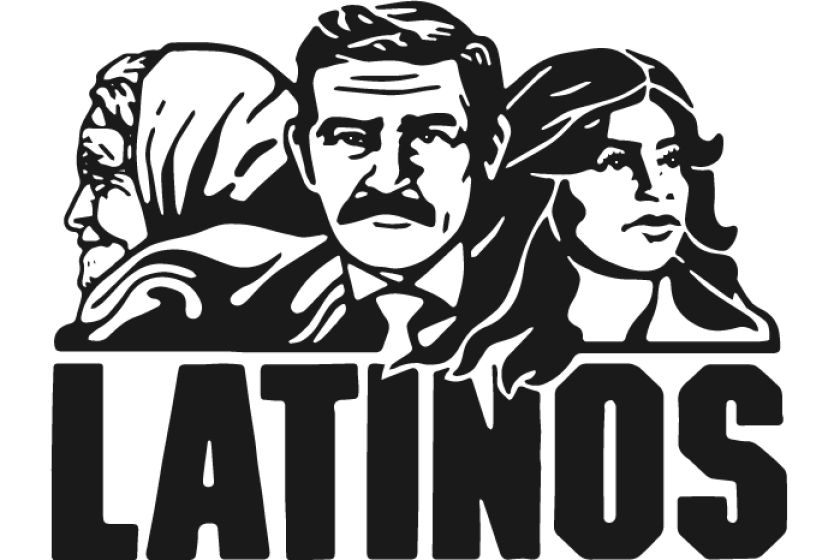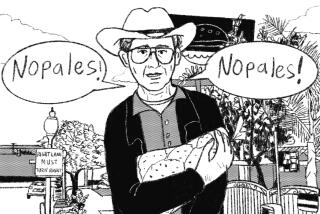Mexican Americans in San Diego: Border divides the best of both worlds

Mexican Americans in San Diego County have the best of two worlds. Because Mexico is so close, many can savor their ancestral heritage by crossing the border and blending into the Latino atmosphere.
Then, just as easily, they can return across the border, reassuming their American life style.
But, for many Mexican Americans here, the best of to worlds sometimes isn’t enough. Numerous Chicanos interviewed by The Times said they merely feel tolerated or reluctantly accepted by San Diego County’s mast Anglo majority. Former San Diego City Councilman Jess Haro, now board chairman of the Chicano Federation, said, “You don’t read too many stories about Chicanos. This city is still heavy into tokenism and we’re still basically second-class citizens.”
Elsa Saxod, a San Diego-educated native of Tijuana who owns a public relations firm here, added, “I think the city being a conservative community has carried over to minority community. And being as close to the border as we are, Mexicans—legal or illegal—as a general rule don’t make waves. All this has added to the fact that this is a quiet minority community.”
Besides, “San Diego doesn’t tolerate activism,” she said.
::
It does seem odd to these people that Chicanos have little or no impact in the social and political fabric of San Diego, with the Mexican border so close. After all, it is pointed out, Tijuana is the second-largest city on North America’s West Coast, with an estimated population of 1 million.
Historian Ricardo Romo, who has written books on the development of Chicanos in Southern California, said the San Diego area is a tough place to figure out in terms of minorities.
“What makes San Diego different is that it’s a border town that’s almost 70% Anglos,” Romo said. “That is very, very unusual. It’s the only border town where Mexicans are not the majority or close to being the majority.
“For many Mexicans that want to settle in the states, San Diego is a place on the way to another place—usually Los Angeles. There, they can lose themselves.”
Mexican Americans number about 130,000 out of San Diego’s total population of 875,000, according to the 1980 U.S. Census.
“The city is different, too, in that it is a great resort, recreational area,” Romo said. “A lot of people are very concerned about the image and that it remains a paradise. They (Anglos) are wary of any movement that intrudes or defaces the paradise of San Diego.”
Haro added in a separate interview, “Chicanos like it down here. We get the same sun as everybody else. I think all of us want to be comfortable, but we don’t want to be harassed with the controversy of issues.
“There is nothing wrong in that we want the same things as Anglos (do). But we don’t have the same sophistication because we haven’t had the same experiences and participation.”
According to some Mexican Americans, two reasons why these Latinos may feel powerless are that the Chicano population in the county—275,000 out of 1.9 million—has no Anglo-recognized political leaders with broad bases of support, and there is no central core of Latino population that can generate political muscle. In short, Chicanos in San Diego County are a dispersed people.
Without politically effective spokesmen, there is no natural forum, no firm direction of advocacy for Latino-oriented issues and concerns.
Some thought Haro, who served on the San Diego City Council from 1975 to 1978, would become the leading Chicano spokesman, perhaps gaining enough popularity to win a seat in Congress. But his ouster from the council—after he pleaded guilty to a misdemeanor charge of undervaluing the worth of furnishings imported from Mexico—ended those hopes.
That hasn’t stopped Haro from speaking out publicly, however, especially now that he is the Chicano Federation board chairman.
Assemblyman Peter Chacon (D-Coronado) is seen as an effective Chicano spokesman in some quarters, but many believe his appeal may be limited to his district. And some dismiss Uvaldo Martinez, who recently was named to the San Diego City Council, because they find it hard to believe a Chicano Republican can adequately represent a constituency that is predominantly Democratic. Others think it’s too early to judge Martinez, counseling patience to see how he deals with issues that affect the poor and needy.
As far as being a dispersed minority is concerned, there are no classic barrios in San Diego like those in Los Angeles—barrios like East Los Angeles, Echo Park, Wilmington, San Fernando and Pacoima. In this county, unless you really know where to go, you have to work hard to find the barrios.
The two best-known barrios here are probably San Ysidro and Logan Heights. However, there are an estimated 30 others throughout San Diego County, albeit less well known or visible. Even Chicanos have a hard time naming half a dozen of these barrios, many of them tucked away from major thoroughfares.
Because San Ysidro is right on the border and retains such a strong Mexican atmosphere, many consider it more a suburb of Tijuana than a Chicano community of San Diego.
Logan Heights, just south of downtown San Diego, is viewed more than any other place as the symbolic center of the county’s Chicano population. Very few Chicanos and Mexican immigrants move into the area because it is economically depressed and there is little available housing.
Nevertheless, Barrio Logan is viewed with respect because it has survived despite the construction of Interstate 5 and the San Diego-Coronado Bay Bridge through the area. The presence of Chicano Park and the numerous murals that have received statewide acclaim stand as testimonials to a community that refused to be moved out, local residents said.
Even so, Logan is unlike Los Angeles barrios, where the Mexican cultural influence is so powerful that in many of them Latinos have created their own “little Mexicos” and retain as much of their culture as possible.
But as one historian pointed out, why create barrios when Mexico itself is only a few miles away?
Some Latino historians, including Romo, believe that, although there are factions that always will resist the assimilation process, the Americanization of Chicanos in San Diego County is coming about faster and more effectively—particularly among professionals—than anywhere else on the 2,000-mile U.S.-Mexico border.
That pressure to assimilate, historians say, has fueled the feeling the feeling of powerlessness that Chicano activists feel in this Anglo-dominated society.
Romo said San Diego public schools have helped to quicken the assimilation process, particularly for local Chicano professors. He said San Diego lacks the racially isolated schools of Los Angeles’ Eastside, for example, thus avoiding the painful desegregation efforts up north.
“They’re going to more integrated schools,” Romo said of most local Chicano youngsters. “They see that to succeed in San Diego, you have to step into the mainstream and work within the mainstream.”
Some Chicanos fear that there are few payoffs for those Latinos who “step into the mainstream.”
“I think the two main issues facing us in San Diego are racism and access,” said Irma Castro, executive director of the Chicano Federation. “People can tell us that there isn’t any racism, (but) we see it every day. We are told that there are numerous opportunities, but we’ve had little opportunity.
“I don’t know how much we really assimilate. I’m sure there is some acculturation. I see people trying to grab hold, trying to feel comfortable making the decision to join ‘white America.’
“It makes me a little uneasy, but it’s a question of choice.”
::
One place where local Chicanos seem to be getting some respect these days is south of the border.
For a long time, U.S.-born people of Mexican descent were viewed by Mexicans as pochos, people who can’t speak Spanish well or who have excessively compromised their Mexican culture and values. To be called a pocho is tantamount to being called a traitor.
It isn’t unusual to occasionally hear Mexican-Americans privately admit that they feel uneasy in Mexico because they fear that their Spanish, appearance and beliefs will be ridiculed by taunting natives.
But here on the border, there is a growing sense of acceptance toward U.S.-born Chicanos, according to residents of both countries.
Border economics expert Homero Reyes, who grew up in Tijuana and now lives in San Ysidro, said Chicanos have grown from being nobodies to somebodies in the eyes of Mexicans. “We noticed that they are standing up to be heard and standing up for their rights,” Reyes said.
But couples with this acceptance, Reyes said, is an element of jealousy.
The irony is that many in Tijuana consumers try to mirror U.S. residents, including Chicanos, in an attempt to keep current with the times.
“It depends on what class you’re talking about, but they (Mexicans) do look upon them with jealousy because Chicanos have established economic well-being in a country that man Mexicans aspire to,” Reyes said.
Nevertheless, some Mexicans hold the pocho viewpoint. “They take on an attitude of looking down on Chicanos because they no longer tend to be Mexican, rather than looking at them as a mixture of American and Mexican values,” he said.
But also in Tijuana, the bond between Chicanos and Mexicans can be particularly strong, especially on the family level.
“All you have to do is look at the number of California plates (on autos) in Tijuana,” said Reyes, who visits Tijuana practically every day for business or to visit relatives. “Many Mexican people live and work in San Diego, but their roots are . . . in Tijuana.
“Families are split with half living in each city. A lot of my friends have families on both sides (of the border). I have neighbors in Tijuana that got married to Chicanos from San Diego and they go back to Tijuana because their parents live there. The crosscurrents are profound.”
At one time or another, Mexican-Americans in San Diego have experienced racism that made a lasting impression on them. The story told by Emerson Elementary School Vice Principal Maria Elena Garcia, 36, who graduated from San Diego’s Morse High School is an example:
“My parents sent me to (St. Jude) Catholic school. I never realized that there were people who didn’t look like you (before) I went to that school. I mean, even the nuns were ridiculing me for bringing tortillas to school. They made a big deal out of eating white bread.
“They even changed my name from Maria Elena to Mary Helen. They just told me that, from now on, ‘Your name is Mary Helen.’ And I used that name until I was 20 (when she began using Maria Elena again).
“Now, I see a lot of people who were my counselors and who tell me how proud they are of me. I say, ‘You . . . ! You never counseled me for anything.’”
Jose Cuellar, a gerontologist at San Diego State University, said that, despite its subtlety, racism in San Diego can be devastating.
“People can say that it isn’t there, but, man, it’s there all right,” Cuellar said.
For example, he said, his wife, who attends Western State University College of Law, overheard a fellow student refer to the job of border patrolmen as “trash collector.” “And that’s in law school,” Cuellar said. “And these are the lawyers of tomorrow?
“My wife said her professor would even do a crude, thick Mexican accent when he was explaining the Miranda (ruling). I tell you, my wife cried with relief for not having to go to that class anymore.”
::
Most Mexican Americans interviewed by The Times think more political power can cure some, if not most, of the ills and injustices that have afflicted the Latino community in San Diego County.
But just how that is going to be accomplished is not clear, they said.
Saxod, the public relations firm owner, said local Chicanos can’t seem to get too excited about politics or issues.
“There has been no issue to rally around, no rallying cry,” she said. “The question arises, ‘Who in this (Chicano) community is the leader?’”
Saxod said many eyebrows were raised when San Diego Port Commissioner Maureen O’Connor pulled as many as she did from the heavily minority 4th and 8th districts in the San Diego mayoral contest earlier this year. As the votes from those districts came in on election night, then-County Supervisor Roger Hedgecock’s lead dwindled from 10-12% to 5%.
“I hope Maureen’s campaign has awakened us and that people realize that there are a lot of people out there who’ll go out and vote,” Saxod said. Castro agreed with Saxod that Chicanos here need leadership and sense of direction.
“People feel now like ‘I can do something,’” Castro said. “They’re not accepting things as much as they used to.
“We’re asked for a sense of direction. The vehicles are there. The question is, ‘What do we do now’
“We need to come up with some kind of master plan. One where we can achieve things. It comes down to a question of commitment.”
Luis Villegas, principal at Lowell Elementary School in Logan Heights, said advancement for the county’s Latinos will require the help of Anglos.
“If you look at the superstructure of our community, you still see a lack of Chicanos in key administrative positions, especially in city and county government,” Villegas said.
“For example, if we look at my field, we don’t have one Hispanic who is a superintendent in the 43 school districts in the county. We have the leaders that will go out and represent our people. But they have to make statements. They can’t be complacent or be willing to keep that status quo.”
The problem, Villegas said, is that “we’re waiting for a messiah, but the messiah ain’t coming.”
“The majority community creates their messiahs. They put action groups together. That’s what needs to be done here. But we cannot have a person running for office and expect to make it only with the Hispanic vote in the county.”
Maria Elena Garcia said Mexican Americans in San Diego are far too passive. “Times have changed, for one thing,” she said. “In some ways we’ve learned that there are certain channels we can take. But I’m not sure we have 50 people who can get excited about one issue. What we have is a group of 10 people doing it and 40 people telling you how great it was that you did it.”
“Chicanos living in San Diego have a lot of turmoil building up within themselves,” she said. “There is a lot of frustration. Because the city is so conservative, there is a lot of frustration at the lack of progress for us.
“But if you push too hard or not hard enough, either way you’re going to set things back. I think you have to decide what you want to do and know where you want to take your risks. Right now, there is not enough risk-taking.”
This story appeared in print before the digital era and was later added to our digital archive.
More to Read
Start your day right
Sign up for Essential California for news, features and recommendations from the L.A. Times and beyond in your inbox six days a week.
You may occasionally receive promotional content from the Los Angeles Times.






